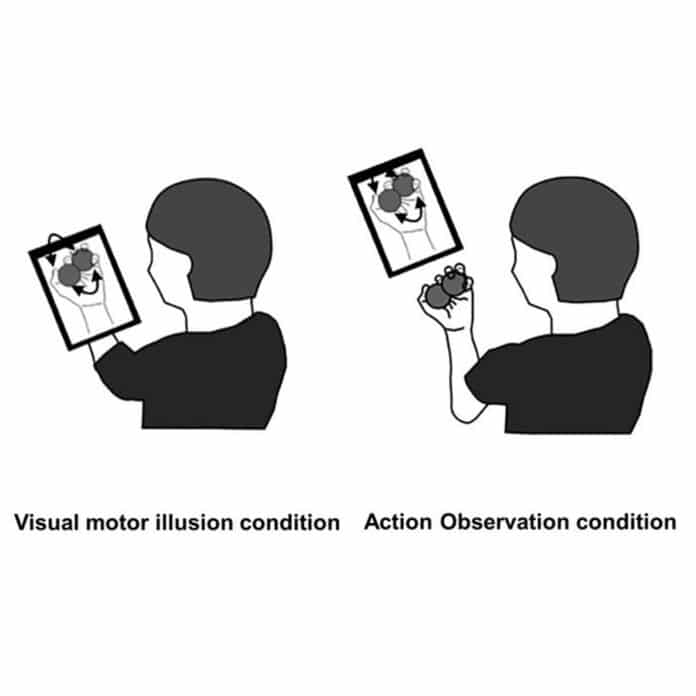The visual-motor illusion (VMI) creates a feeling of movement by watching a video of oneself in motion while the body is still. It’s not clear whether this visual-motor illusion helps with the early stages of motor learning, especially in the immediate to one-hour timeframe.
A new study by researchers from Tokyo Metropolitan University investigated whether VMI changes the early stages of motor learning in healthy individuals. It showed that visual aids that create the illusion of movement, like a screen placed in front of one’s hand showing the hand movement, can improve motor performance and the early stages of motor learning.
FMRI data revealed more significant changes in brain activity in areas linked to motor learning than observing motions from a third-person perspective. Insights from such findings could contribute to developing new treatment approaches for hemiplegic stroke patients.
A team led by Assistant Professor Katsuya Sakai from Tokyo Metropolitan University found that the visual-motor illusion (VMI) can enhance motor performance and early-stage motor learning. Volunteers were tasked with rolling two metal balls in one hand. After initial tests, one group used a visual aid invoking VMI, while another watched the video normally. Both groups improved, but the VMI group showed more enhancement immediately and one hour later, indicating persistent improvement. Using imaging, the team observed differences in brain activity associated with learning new movements.
The researchers discovered significant differences in volunteers’ brain activity using the visual-motor illusion (VMI) compared to those using action observation (AO), particularly in learning new movements. Crucially, these changes persisted an hour after the visual stimuli, aligning with the performance improvements observed in the task. This aligns with previous findings from the group, demonstrating that VMI enhances connectivity in brain regions responsible for motor execution.
Scientists noted, “There is still much work to be done. For example, these findings come from a study on healthy individuals, and there is yet to be any assessment of mid to long-term motor performance. However, the insights gleaned from this study shed light on a unique strategy to improve motor performance and learning, which may one day be applied to the rehabilitation of hemiplegic stroke patients and guide the development of new treatments.”
Journal Reference:
- Sakai, K., Kawasaki, T., Ikeda, Y. et al. Differences in the early stages of motor learning between visual-motor illusion and action observation. Sci Rep 13, 20054 (2023). DOI: 10.1038/s41598-023-47435-8
